 W
WGeneral James Abercrombie or Abercromby of Glassaugh, Banffshire was a British Army general and Whig politician who sat in the House of Commons from 1734 to 1754. He was commander-in-chief of forces in North America during the French and Indian War, best known for the disastrous British losses in the 1758 Battle of Carillon.
 W
WField Marshal John Campbell, 5th Duke of Argyll, styled Marquess of Lorne from 1761 to 1770, was a Scottish soldier and nobleman. After serving as a junior officer in Flanders during the War of the Austrian Succession, he was given command of a regiment and was redeployed to Scotland where he opposed the Jacobites at Loch Fyne at an early stage of the Jacobite Rebellion and went on to fight against them at the Battle of Falkirk Muir and then at the Battle of Culloden. He later became adjutant-general in Ireland and spent some 20 years as a Member of Parliament before retiring to Inveraray Castle.
 W
WSir Henry Askew KCB was an officer of the British Army. He served during the Napoleonic Wars and fought at the Battle of Waterloo. He rose to the rank of lieutenant-general during his career.
 W
WSir George Ballingall was a Scottish physician and surgeon. He was regius professor of military surgery at the University of Edinburgh.
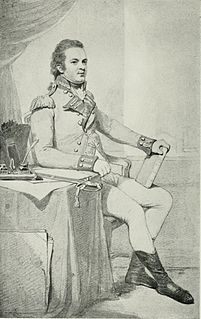 W
WColonel John Drinkwater Bethune (1762–1844), born John Drinkwater, was an English army officer, administrator and military historian, known for his account of the Great Siege of Gibraltar that came out in 1785.
 W
WGeneral Duncan Campbell of Lochnell was a Scottish soldier and Whig politician from Argyll. An officer in the Duke of Argyll's regiment of the British Army, he sat in the House of Commons for nine years in the interest of George Campbell, 6th Duke of Argyll.
 W
WLieutenant General Sir James Campbell, 1st Baronet, 3rd of Inverneill House was a Scottish soldier, politician and colonial administrator. He was Governor and Commander-in-Chief of the Ionian Islands, Adjutant-General to the British Forces and Heritable Usher of the White Rod for Scotland. He is buried at Westminster Abbey.
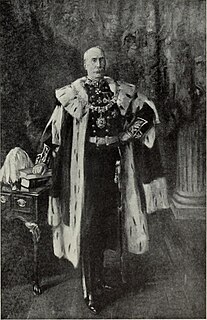 W
WBrigadier-General Sir Robert Cranston was a Scottish military officer who served as Lord Provost of Edinburgh from 1903 to 1906. He had an illustrious military career largely with the Volunteer Force.
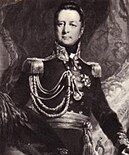 W
WGeneral George Ramsay, 9th Earl of Dalhousie,, styled Lord Ramsay until 1787, and Baron Dalhousie from 1815, was a Scottish soldier and colonial administrator. He was Governor of Nova Scotia from 1816 to 1820, Governor General of British North America from 1820 to 1828 and later Commander-in-Chief in India. In turn, his son, James Andrew Broun-Ramsay, 1st Marquess of Dalhousie, would later serve as Governor-General of India.
 W
WSir Hew Dalrymple, 3rd Baronet was the Member of Parliament (MP) for Haddingtonshire 1780–1786.
 W
WSir William Young Darling CBE FRSE LLD MC was the Unionist Member of Parliament in the British House of Commons for the Edinburgh South constituency from 1945 to 1957. He was a director of the Royal Bank of Scotland from 1942 to 1957.
 W
WMajor General Sir Rohan Delacombe, was a senior British Army officer. He was the last British Governor of Victoria, Australia from 1963 to 1974.
 W
WLord James Douglas (1617–1645) was a Scottish nobleman and soldier.
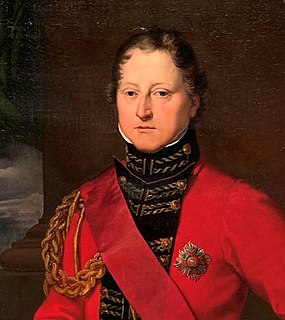 W
WGeneral Sir Gordon Drummond, GCB was a Canadian-born British Army officer and the first official to command the military and the civil government of Canada. As Lieutenant Governor of Upper Canada, Drummond distinguished himself on the Niagara front in the War of 1812 and later became Governor-General and Administrator of Canada.
 W
WMajor-General George Douglas, Earl of Dumbarton and Lord of Ettrick KT was a Scottish professional soldier, who spent much of his career in the service of Louis XIV. In 1678, he returned to England; as a Catholic, he was a trusted servant of James II & VI and went into exile with him after the 1688 Glorious Revolution. He died at the palace of St Germain-en-Laye in March, 1692.
 W
WGeneral Francis Dundas was a British general and acting governor of the Cape Colony between 1798 and 1803.
 W
WPrince Edward, Duke of Kent and Strathearn, was the fourth son and fifth child of King George III. His only child became Queen Victoria.
 W
WMajor Roland Edward Elcock VC MM was an English recipient of the Victoria Cross, the highest and most prestigious award for gallantry in the face of the enemy that can be awarded to British and Commonwealth forces.
 W
WSir Henry Erskine, 5th Baronet was a Scottish soldier and politician.
 W
WCaptain Douglas Ford (1918–1943) was a Royal Scots officer and British prisoner of war in the Second World War, who was posthumously awarded the George Cross for conspicuous gallantry. His citation was published in the London Gazette on 18 March 1946.
 W
WSir Hamilton John Goold-Adams, was an Irish soldier and colonial administrator, who served as Governor of Queensland from 1915 to 1920.
 W
WMajor Archibald Alexander Gordon CBE, MVO, Order of Leopold, Legion of Honour was a Scottish soldier who served as attaché to the Military Household of King Albert I of Belgium during World War I, with the title of Belgian King's Messenger. He is the younger brother of William Eagleson Gordon, who was awarded the Victoria Cross.
 W
WJames Grant, Laird of Ballindalloch (1720–1806) was a British Army officer who served as a major general during the American War of Independence. He served as Governor of East Florida from 1763 to 1771, and between 1773 and 1802 he had seats in the House of Commons.
 W
WSir Peter Halkett, 2nd Baronet was a Scottish baronet who served in the British army and was Member of Parliament for Stirling Burghs from 1734-1741.
 W
WWalter Balmer Hislop was a portrait painter and landscape artist.
 W
WJohn Poynder Dickson-Poynder, 1st Baron Islington,, born John Poynder Dickson and known as Sir John Poynder Dickson-Poynder from 1884 to 1910, was a British politician. He was Governor of New Zealand between 1910 and 1912.
 W
WVictor Alexander John Hope, 2nd Marquess of Linlithgow, was a British Unionist politician, agriculturalist, and colonial administrator. He served as Governor-General and Viceroy of India from 1936 to 1943. He was usually referred to simply as Linlithgow.
 W
WJames Henry Logan, sometimes known as Jimmy Logan, was a Scottish professional footballer who made 158 appearances in the English Football League playing for Bradford City, Chesterfield Town and Bradford Park Avenue. He also played for and managed Scottish League club Raith Rovers and was manager of Wrexham of the English Football League. He played primarily as a half back, but appeared at centre forward in his early career.
 W
WSchomberg Henry Kerr, 9th Marquess of Lothian,, styled Lord Schomberg Kerr until 1870, was a British diplomat and Conservative politician. He served as Secretary for Scotland under Lord Salisbury between 1887 and 1892. He was usually styled simply as Lothian.
 W
WGeoffrey Forbes Lumsden was a British character actor who had a lengthy career on television.
 W
WThomas Graham, 1st Baron Lynedoch was a Scottish aristocrat, politician and British Army officer. After his education at Oxford, he inherited a substantial estate in Scotland was married and settled down to a quiet career as a landowning gentleman. However, with the death of his wife, when he was aged 42, he immersed himself in a military career, during the French Revolutionary Wars and the Napoleonic Wars.
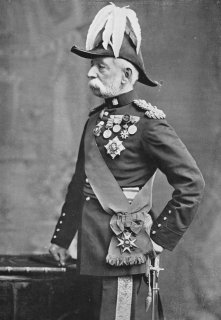 W
WGeneral Sir Daniel Lysons was a British Army general who achieved high office in the 1870s.
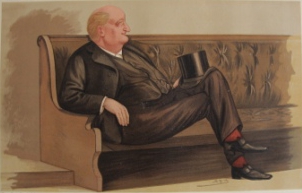 W
WSir John Hay Athole Macdonald, Lord Kingsburgh, KCB, PC, PRSSA, FRS, FRSE was a Scottish Conservative Party politician and later a judge.
 W
WGeorge Mackenzie was a British officer who commanded the 2nd battalion of the 73rd Highlanders during the Great Siege of Gibraltar.
 W
WMajor John Mackenzie, VC, DCM was a Scottish recipient of the Victoria Cross, the highest and most prestigious award for gallantry in the face of the enemy that can be awarded to British and Commonwealth forces.
 W
WArchibald Campbell Holms MacLean, was an officer in the Royal Scots, Royal Flying Corps and Royal Air Force. MacLean attended the Royal Military College, Sandhurst, before he was commissioned into the Royal Scots. He transferred to the Royal Flying Corps in 1913 and during the First World War served as a squadron leader and wing commander before taking up senior training and staff appointments. In April 1918 he transferred to the newly formed Royal Air Force and was subsequently promoted to brigadier general just after the end of the First World War.
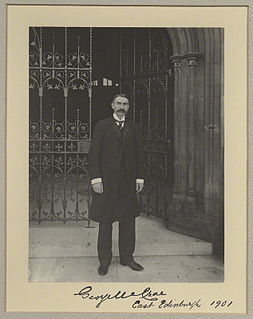 W
WColonel Sir George McCrae was a Scottish textile merchant and Liberal Party politician. In Scotland he is best remembered for the creation of McCrae's Battalion, also known as the Second Edinburgh Pals Battalion and (officially) the 16th Battalion Royal Scots.
 W
WDavid Stuart McGregor VC was a Scottish recipient of the Victoria Cross, the highest and most prestigious award for gallantry in the face of the enemy that can be awarded to British and Commonwealth forces. A soldier with The Royal Scots during the First World War, he was posthumously awarded the VC for his actions on 22 October 1918, during the Hundred Days Offensive.
 W
WField Marshal Richard Molesworth, 3rd Viscount Molesworth, PC (Ire) FRS, styled The Honourable Richard Molesworth from 1716 to 1726, was an Anglo-Irish military officer, politician and nobleman. He served with his regiment at the Battle of Blenheim before being appointed aide-de-camp to the Duke of Marlborough during the War of the Spanish Succession. During the Battle of Ramillies Molesworth offered Marlborough his own horse after Marlborough fell from the saddle. Molesworth then recovered his commander's charger and slipped away: by these actions he saved Marlborough's life. Molesworth went on Lieutenant of the Ordnance in Ireland and was wounded at the Battle of Preston during the Jacobite rising of 1715 before becoming Master-General of the Ordnance in Ireland and then Commander-in-Chief of the Royal Irish Army.
 W
WSir Robert Munro of Foulis, 6th Baronet was a soldier-politician whose life followed an 18th-century pattern. He fought in support of the Revolution Settlement and the House of Hanover, and their opposition to all attempts by the Jacobites to restore the House of Stuart either by force of arms or by political intrigue.
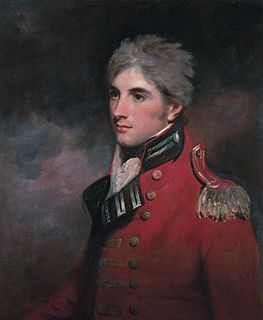 W
WSir George Murray was a British soldier and politician from Scotland.
 W
WLewis Windermere Nott was an Australian politician, medical practitioner and hospital superintendent. He represented two federal electorates, more than 1,000 kilometres (620 mi) and 21 years apart.
 W
WField Marshal George Hamilton, 1st Earl of Orkney, KT, styled Lord George Hamilton from 1666 to 1696, was a British soldier and Scottish nobleman and the first British Army officer to be promoted to the rank of field marshal. After commanding a regiment for the cause of William of Orange during the Williamite War in Ireland, he commanded a regiment in the Low Countries during the Nine Years' War. He then led the final assault at the Battle of Blenheim attacking the village churchyard with eight battalions of men and then receiving the surrender of its French defenders during the War of the Spanish Succession. He also led the charge of fifteen infantry battalions in an extremely bloody assault on the French entrenchments at the Battle of Malplaquet. In later life he became a Lord of the Bedchamber to George I and was installed as Governor of Edinburgh Castle.
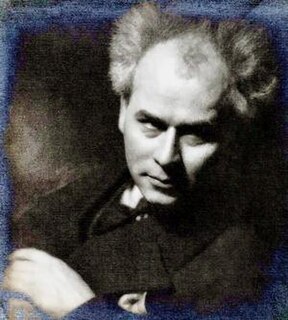 W
WHugh Quigley was a Scottish economist, statistician, farmer, and author. His diary of his service with the 12th Royal Scots Regiment of the British Army at Passchendaele and the Somme during the First World War was published in 1928.
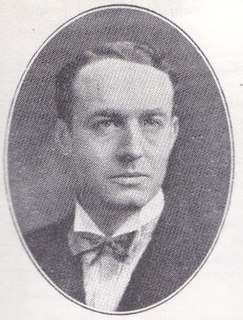 W
WCecil Beresford Ramage, MC was a Scottish barrister, actor and Liberal politician.
 W
WJames Scott Cumberland Reid, Baron Reid, was a Scottish Unionist politician and judge. His reputation is as one of the most outstanding judges of the 20th century.
 W
WHenry Reynolds was an English recipient of the Victoria Cross, the highest and most prestigious award for gallantry in the face of the enemy that can be awarded to British and Commonwealth forces.
 W
WPeter de Salis, 3rd Count de Salis was the second son of Jerome De Salis by his wife Mary, daughter of the first Viscount Fane. He was educated with his brothers, Charles and Henry, in the Grisons, in Chur where his tutor was Johann Heinrich Lambert, and then at Eton. He left Eton early in 1754 and was commissioned as an ensign in the 1st Regiment of Foot on 17 October 1754, which cost £900, subsequently he fought in the Seven Years' War, becoming a lieutenant on 27 October 1760. He left the army a captain and was sent by his father to the Grisons where he married a second cousin in 1763, she died, morte avec une fille en couches a year later. In 1765 he married a first cousin, she died 18 months later. In 1769 he married a combined third and fourth cousin, she bore him two sons and outlived him 22 years.
 W
WFriedrich Hermann von Schönberg, 1st Duke of Schomberg, 1st Count of Mertola, was a Marshal of France and a General in the English and Portuguese Army. He was killed at the Battle of the Boyne in 1690.
 W
WGeneral Nathaniel Stevenson (1840–1911) was a British Army officer who became Lieutenant Governor of Guernsey.
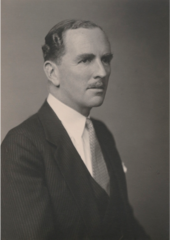 W
WJames Gray Stuart, 1st Viscount Stuart of Findhorn, was a Scottish Unionist politician. He was joint-Parliamentary Secretary to the Treasury in Winston Churchill's war-time coalition government and later served as Secretary of State for Scotland under Churchill and then Sir Anthony Eden from 1951 to 1957. In 1959 he was elevated to the peerage as Viscount Stuart of Findhorn.
 W
WMajor General Sir Alexander Bruce Tulloch, was a British Army officer who served as military commandant for the Colony of Victoria, a war correspondent and an author.
 W
WPiers Anthony Weymouth Wedgwood, 4th Baron Wedgwood was the fourth Baron Wedgwood of the pottery dynasty. After initially following a military career, he later worked as an international ambassador for the Wedgwood company.
 W
WGeneral Sir George Augustus Wetherall, was a senior British Army officer.
 W
WCharles Whitworth, 1st Earl Whitworth, GCB, PC, known as The Lord Whitworth between 1800 and 1813 and as The Viscount Whitworth between 1813 and 1815, was a British diplomat and politician.
 W
WSir Alexander William Younger is a former career British intelligence officer for the Secret Intelligence Service (MI6) who served as the Chief of the Secret Intelligence Service, succeeding Sir John Sawers on his retirement. In April 2019, the Government extended Younger's contract to maintain stability through the Brexit negotiations, a move which would make him the longest-serving MI6 chief in 50 years.